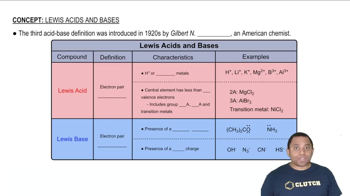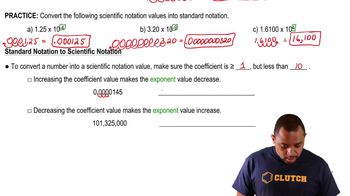Here are the essential concepts you must grasp in order to answer the question correctly.
Lewis Acids and Bases
Lewis acids are substances that can accept an electron pair, while Lewis bases are those that can donate an electron pair. This definition expands the concept of acids and bases beyond protons, allowing for a broader range of chemical reactions. Understanding these roles is crucial for analyzing reactions where electron pair transfer occurs.
Recommended video:
Electron-Dot Structures
Electron-dot structures, or Lewis structures, visually represent the valence electrons of atoms within a molecule. They help illustrate how atoms bond and the arrangement of electrons, including lone pairs and bonding pairs. Drawing these structures is essential for understanding the interactions between Lewis acids and bases in a reaction.
Recommended video:
Lewis Dot Structures: Ions
Curved Arrow Notation
Curved arrow notation is a method used in organic chemistry to depict the movement of electron pairs during chemical reactions. The tail of the arrow indicates the source of the electrons, while the head points to where the electrons are going. This notation is vital for illustrating the mechanism of Lewis acid-base reactions, showing how electron pairs are transferred.
Recommended video:
Standard Notation to Scientific Notation
 Verified step by step guidance
Verified step by step guidance

